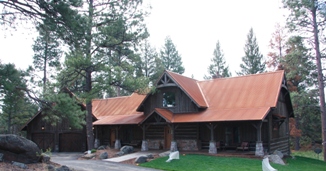Follow these 10 steps, to maximize the aesthetic value of your colored mulch

- Kill Weeds: Spray all weeds with weed killer 1 to 2 weeks prior to mulching. This allows weeds to completely die, making them much easier to pull.
- Trim Trees and Bushes: Because of the debris produced, be sure to trim trees and bushes before applying new mulch.
- Clean Out Mulch Beds: Remove all dead leaves, weeds and trimmings with a rake.
- Cultivate: Use a roto-tiller or hand cultivator to loosen any compacted soil or mulch. This allows moisture and air to pass through the mulch easier.
- Edge Your Beds: Landscapes with clean edges enhance the appearance and give it a professional look.
- Rake Smooth: Use a stiff rake to smooth all surfaces to be mulched.
- Apply a Pre-Emergent: This is the time to prevent weed seeds. Apply the pre-emergent before mulching. A second application later further ensures protection from weed seeds.
- It’s Time to Mulch: Using your hands or a rake, apply new mulch over the cultivated mulch or soil. Spread evenly to your desired thickness depending on your budget or taste. When complete, water to moisturize mulch and settle it into place.
- Mulch Maintenance: After a month or so, check mulch for compaction. If it’s compacted use a garden claw or cultivator to loosen. This allows water and air to pass, which helps prevent growth of fungus and restores appearance.
- Fungus: If present, remove it and the surrounding mulch. Rake existing mulch to cover the area. Then water thoroughly. Fungus is a sure sign that your mulch has compacted and your beds have dehydrated; cultivation and watering may be necessary.
MULCH MYTHS!!!
"Mulch causes termites to invade my home!" ... This is misleading information that is usually passed on by pest control technicians to homeowners and is such a broad statement that it should be discounted. Most bagged or nursery-bought mulches are clean and do not contain pests such as termites. If your house has or is going to have termites it is NOT because you put mulch in the gardens surrounding it. Buying low-grade, tree service, or dump-mulch may carry a higher risk of being infected with such pests, but that does not mean that they will attack your home. Termites exist in every landscape and will only infest structures that offer a prime environment for them. This means dark, moist, rotting wood that has little or no airflow. Purchasing CERTIFIED MULCHES is your best way to feel 100% confident that your mulch is clean and you can put a boot in the pest control technicians #@*#*@! when he tells you that your mulch is the cause of your termite problems.
"Mulch will just wash or blow away!" ... While it is true that some properties are sited in areas that are more succeptable to strong and gusty winds, please tell me the last time you were driving down a road and ran into a large cloud of mulch in the air? I have never seen any weather forcaster announce a warning for "blowing mulch"! OK, OK, so some mulch is bound to blow away in gusts or if it is particularly lightweight. But it is unlikely that you will loose your entire landscape of mulch to wind. One way to help prevent this is to "water down" newly applied mulch with a shower from your hose. This helps to set the mulch and lock the pieces together. Heavy rains may cause some lightweight mulches to wash away especially if the mulched area is on a moderate to severe slope or is located at the base of a downspout or other natural drainage way. When located in an average garden on fairly level terrain however unless we have a terrential, driving, gusty rain, chances are that mulch isn't going anywhere. In most cases, mulch is more likely to be carried off by passersby, kids, birds, squirrels, etc. or it just simply breaks down naturally. Mulch should be expected to break down and will need to be reapplied every couple of years assuming the original application was appropriate and correct.
"Old mulch should be removed before new mulch is applied" ... Unless the old mulch was applied too thick and is matted or molded, there is no reason to remove old mulch. In the case of the old mulch being matted, this can be fixed by simply raking or breaking up the mulch before applying new mulch to the top. Matting and molding are typically not a problem when using a quality mulch that has a variance in sizes of the grind. However some mulches are more succeptable to matting or molding such as the Died Mulches and Cottonwood. Regardless, neither of these issues will be harmful to your landscape and the mulch can simply be fluffed up before a new top layer is applied. The only time I would recommend removing the old mulch is if there is going to be a significant color change (i.e. old mulch is red, new mulch is natural hardwood). Otherwise, don't bother breaking your back removing the old stuff!



